Water Rail, Waterral, Wasserralle, Frango-d’água, Rascón Europeo
Spotted in the Alentejo region of Portugal. Water Rail sound
The Water Rail (Rallus aquaticus) is a bird of the rail family which breeds in well-vegetated wetlands across Europe, Asia and North Africa. Northern and eastern populations are migratory, but this species is a permanent resident in the warmer parts of its breeding range.
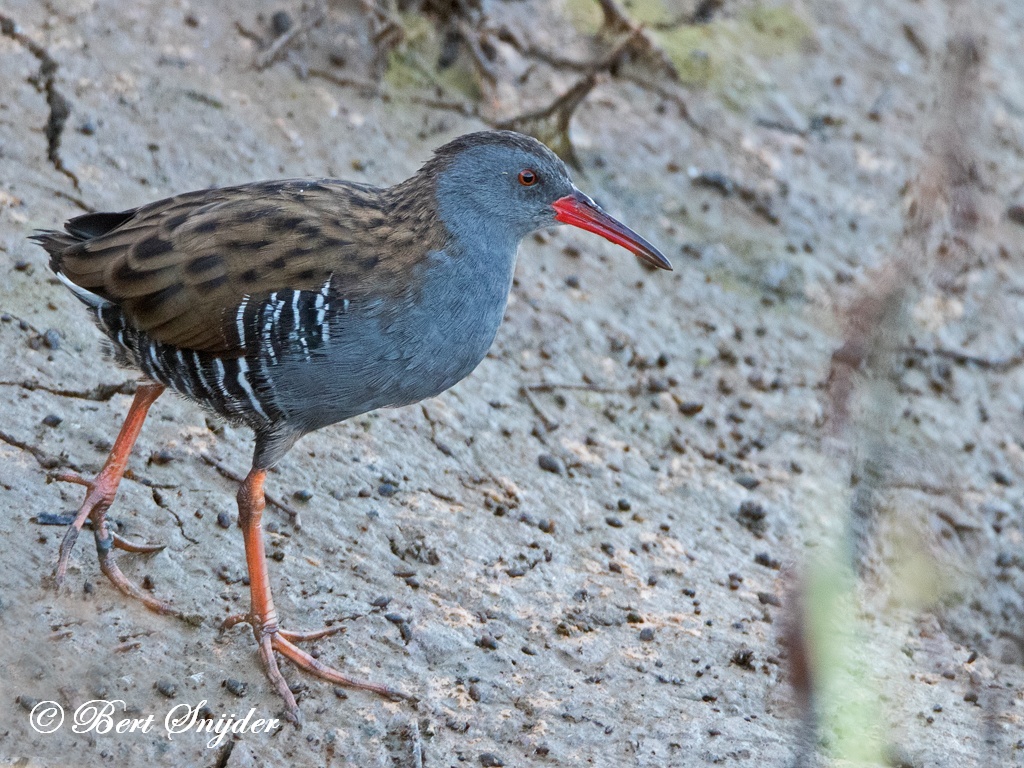
More photos at the bottom of this page.
The adult is 23–28 cm (9–11 in) long, and, like other rails, has a body that is flattened laterally to allow it easier passage through the reed beds it inhabits. It has mainly brown upperparts and blue-grey underparts, black barring on the flanks, long toes, a short tail and a long reddish bill. The eastern subspecies, R. a. indicus, has distinctive markings and a call that is very different from the pig-like squeal of the western races, and is sometimes split as a separate species. Immature birds are generally similar in appearance to the adults, but the blue-grey in the plumage is replaced by buff. The downy chicks are black, as with all rails.
The Water Rail breeds in reed beds and other marshy sites with tall, dense vegetation, building its nest a little above the water level from whatever plants are available nearby. The off-white, blotched eggs are incubated mainly by the female, and the precocial downy chicks hatch in 19–22 days. The female will defend her eggs and brood against intruders, or move them to another location if they are discovered. This species can breed after its first year, and it normally raises two clutches in each season. Water Rails are omnivorous, although they feed mainly on animals. They are territorial even after breeding, and will aggressively defend feeding areas in winter.
These rails are vulnerable to flooding or freezing conditions, loss of habitat and predation by mammals and large birds. The introduced American mink has exterminated some island populations, but overall the species’ huge range and large numbers mean that it is not considered to be threatened.
The rails are a bird family comprising nearly 150 species. Although the origins of the group are lost in antiquity, the largest number of species and the most primitive forms are found in the Old World, suggesting that this family originated there. However, the genus Rallus, the group of long-billed reed bed specialists to which the Water Rail belongs, arose in the New World. Its Old World members, the Water, African and Madagascar Rails, form a superspecies, and are thought to have evolved from a single invasion from across the Atlantic. Genetic evidence suggests that the Water Rail is the most closely related of its genus to the Pacific Gallirallus rails,and is basal to that group. The Water Rail was first described by Linnaeus in his Systema Naturae in 1758 under its current scientific name, Rallus aquaticus. The binomial name is the Latin equivalent of the English “Water Rail”.
The adult of the nominate subspecies is a medium-sized rail, 23–28 cm (9–11 in) long with a 38–45 cm (15–17.7 in) wingspan. Males typically weigh 114–164 g (4.0–5.8 oz) and females are slightly lighter at 92–107 g (3.2–3.8 oz). The upperparts from the forehead to tail are olive-brown with black streaks, especially on the shoulders. The sides of the head and the underparts down to the upper belly are dark slate-blue, except for a blackish area between bill and eye, and brownish sides to the upper breast. The flanks are barred black and white, and the undertail is white with some darker streaks. The long bill and the iris are red, and the legs are flesh-brown. The sexes are similar; although the female averages slightly smaller than the male, with a more slender bill, determining sex through measurements alone is unreliable. The juvenile has a blackish crown and a white chin and throat. The underparts are buff or white with darker bars, and the flank markings are brown and buff, rather than black and white. The undertail is buff, and the eye, bill and leg colours are duller than the adult. The downy chick is all black apart from a mainly white bill. After breeding, the rail has an extensive moult, and is flightless for about three weeks. Individual adults can be identified by the markings on the undertail, which are unique to each bird. Adult males have the strongest black undertail streaks. It has been suggested that the dark barring on the undertail of this species is a compromise between the signalling function of a pure white undertail, as found in open water or gregarious species like the Common Moorhen, and the need to avoid being too conspicuous.
The Water Rail can readily be distinguished from most other reed bed rails by its white undertail and red bill; the latter is a little longer than the rest of the rail’s head (55–58% of the total) and slightly down-curved. The somewhat similar Slaty-breasted Rail of tropical Asia has a stouter bill, a chestnut crown and white-spotted upperparts. Juvenile and freshly moulted Water Rails may show a buff undertail like Spotted Crake, but that species’ plumage is spotted with white, and it has a much shorter, mainly yellowish bill. The range of the Water Rail does not overlap with that of any other Rallus species, but vagrants could be distinguished from their American relatives by the lack of rufous or chestnut on the closed wing. The larger African Rail has unstreaked darker brown upperparts and brighter red legs and feet.
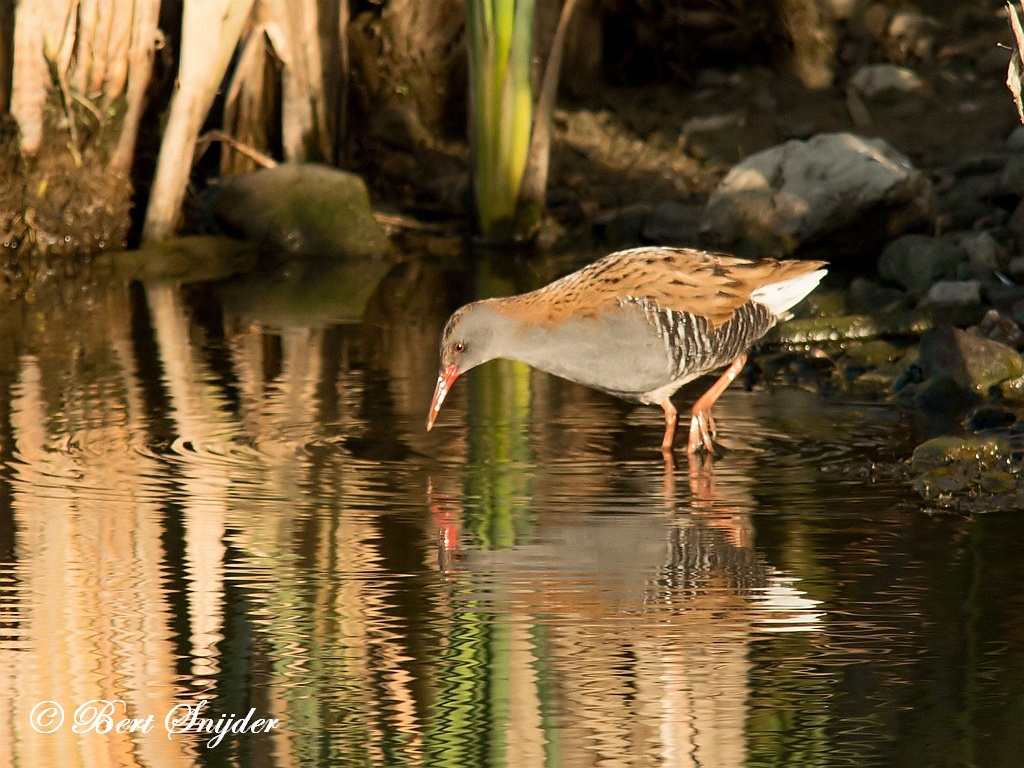

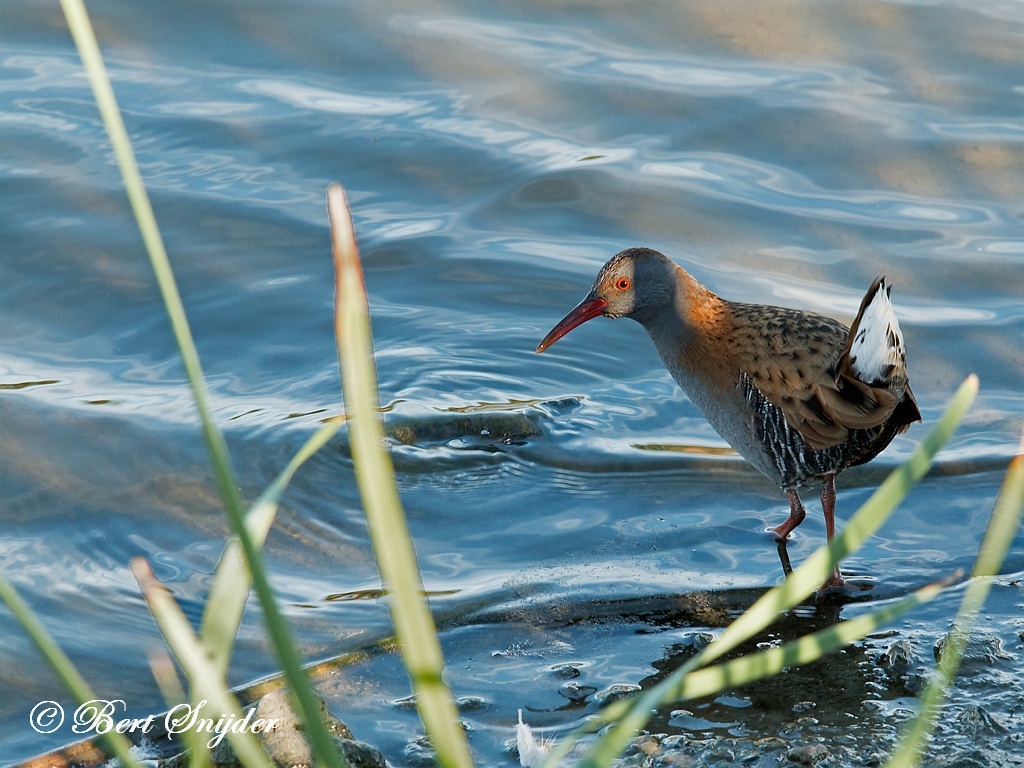
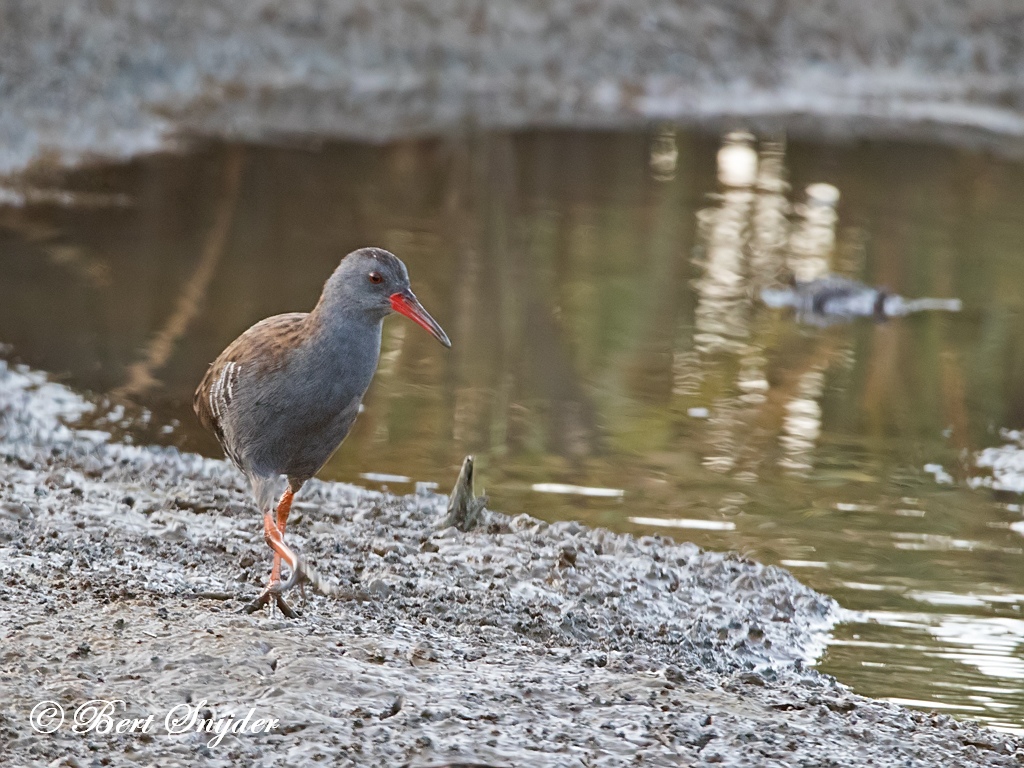
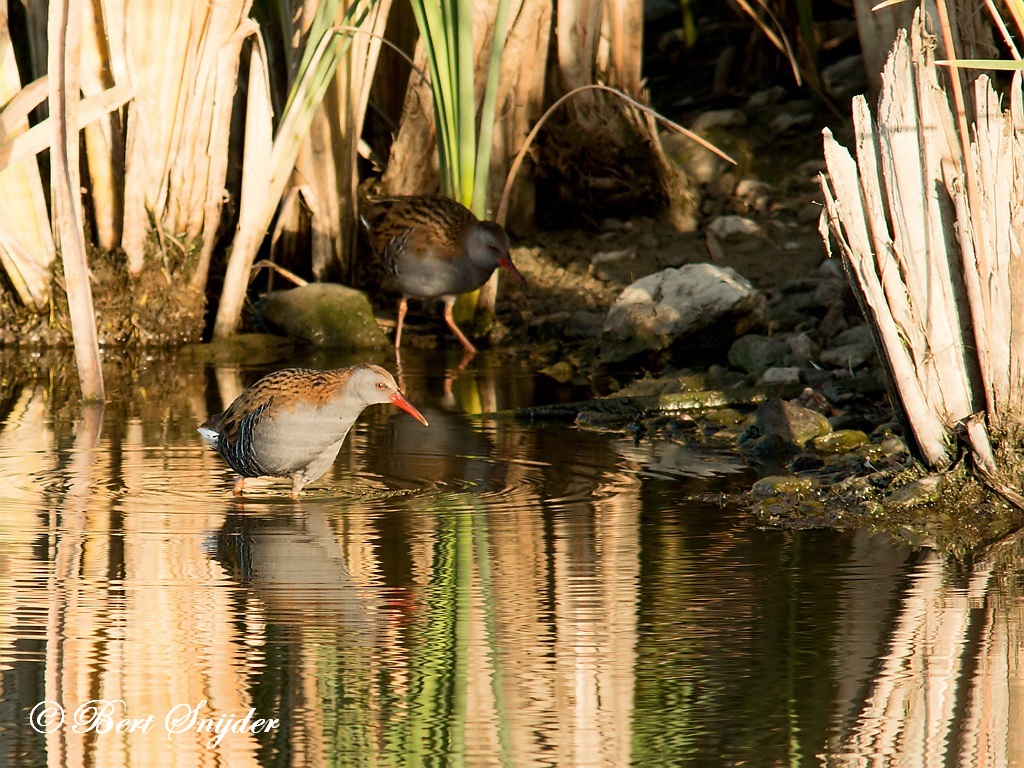
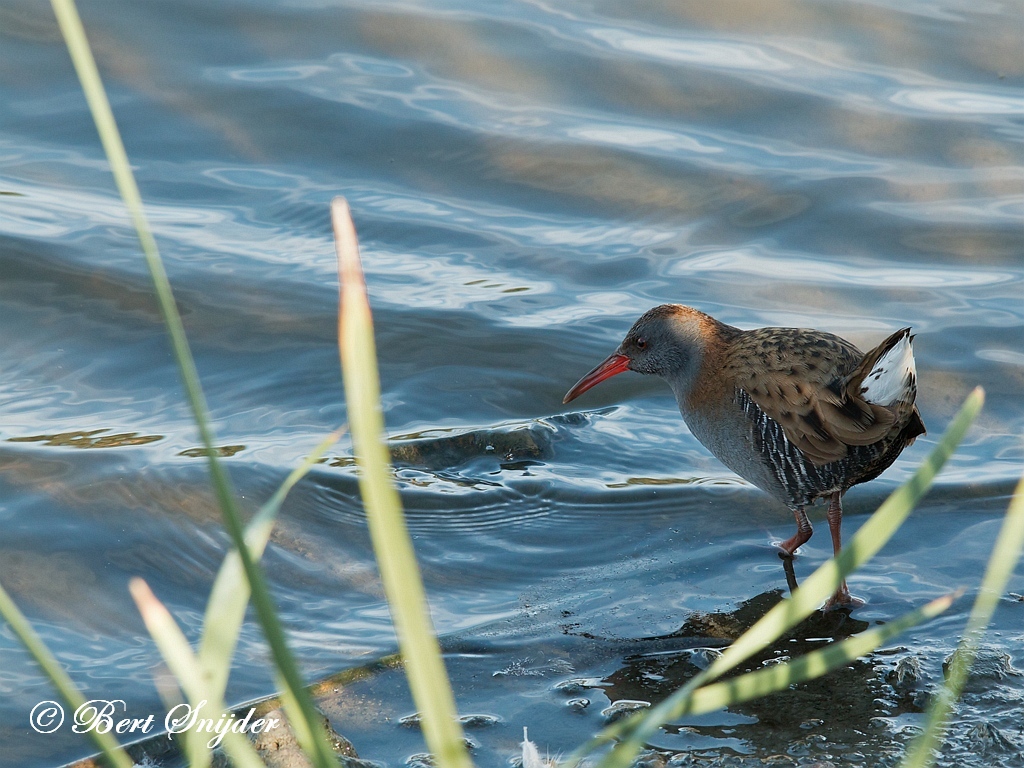
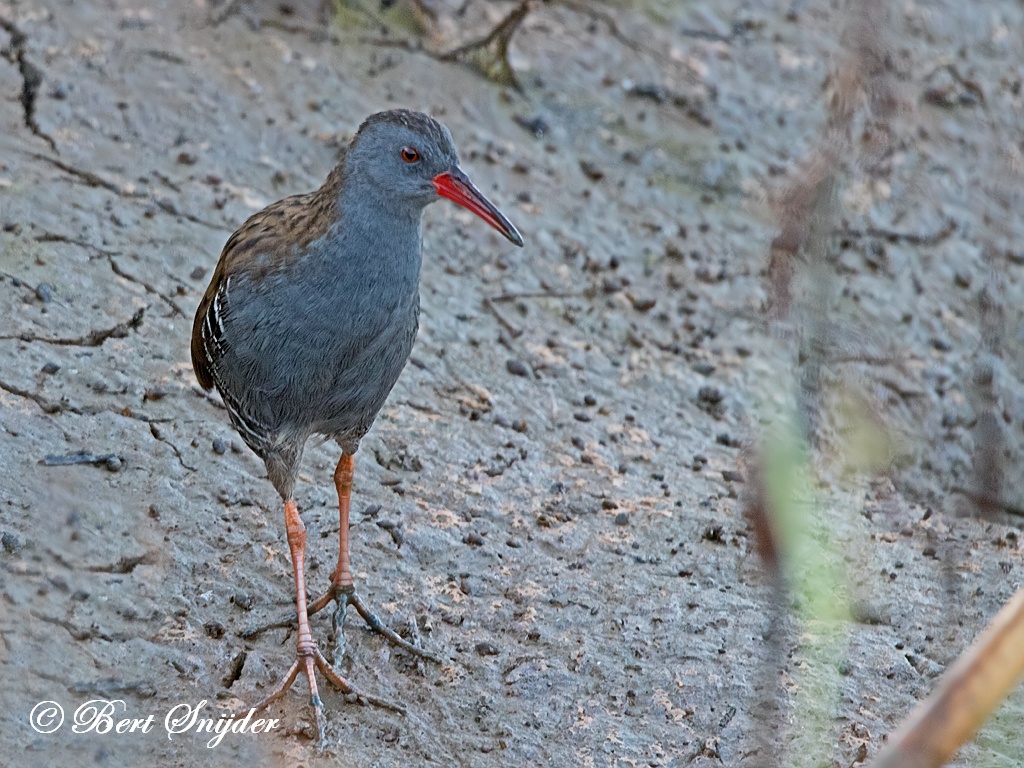
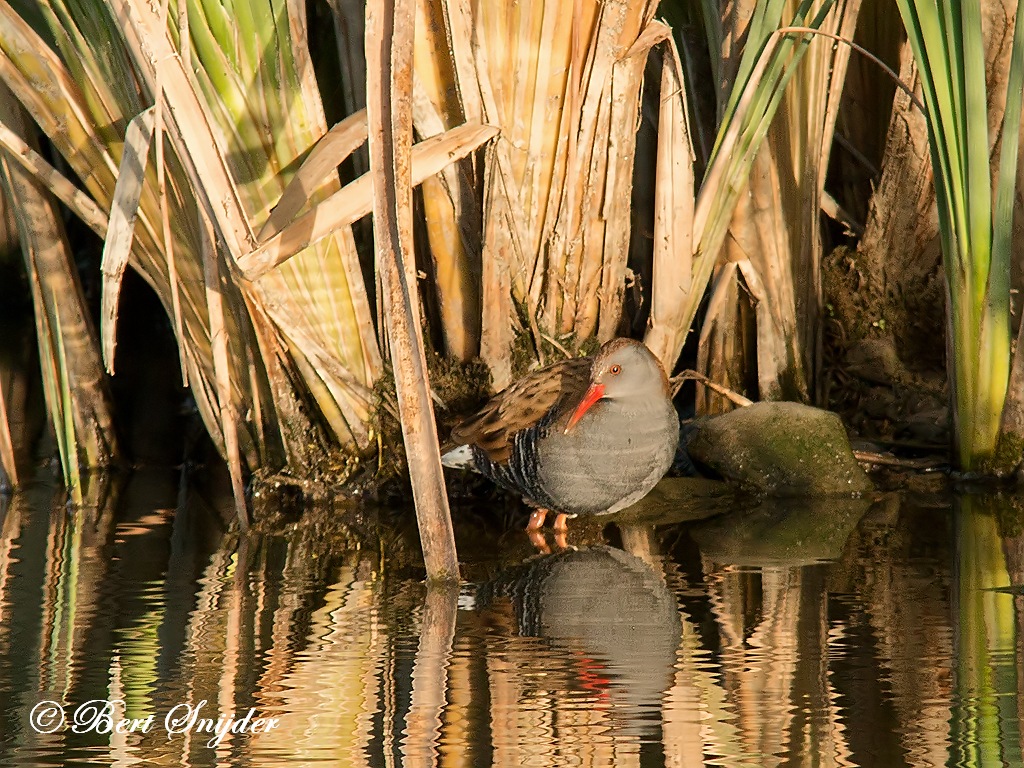

Other synonyms:
Czech: Chrástal vodní
Danish: Vandrikse
German: Wasserralle
English: Water Rail
Spanish: Rascón Europeo
Estonian: Rooruik
Finnish: Luhtakana
Faroese: jarðarkona
French: Râle d’eau
Hungarian: Guvat
Icelandic: Keldusvín
Italian: Porciglione eurasiatico
Latin: Rallus aquaticus
Lithuanian: Ilgasnape vištele
Dutch: Waterral
Norwegian: Vannrikse
Polish: wodnik (zwyczajny)
Portuguese: narceja, Narceja-comum
Swedish: Vattenrall
Travel Birdwatching Holiday Alentejo, Vacation Portugal for birders to see birds on your trip. Guided Birdwatching Tours and Trips.